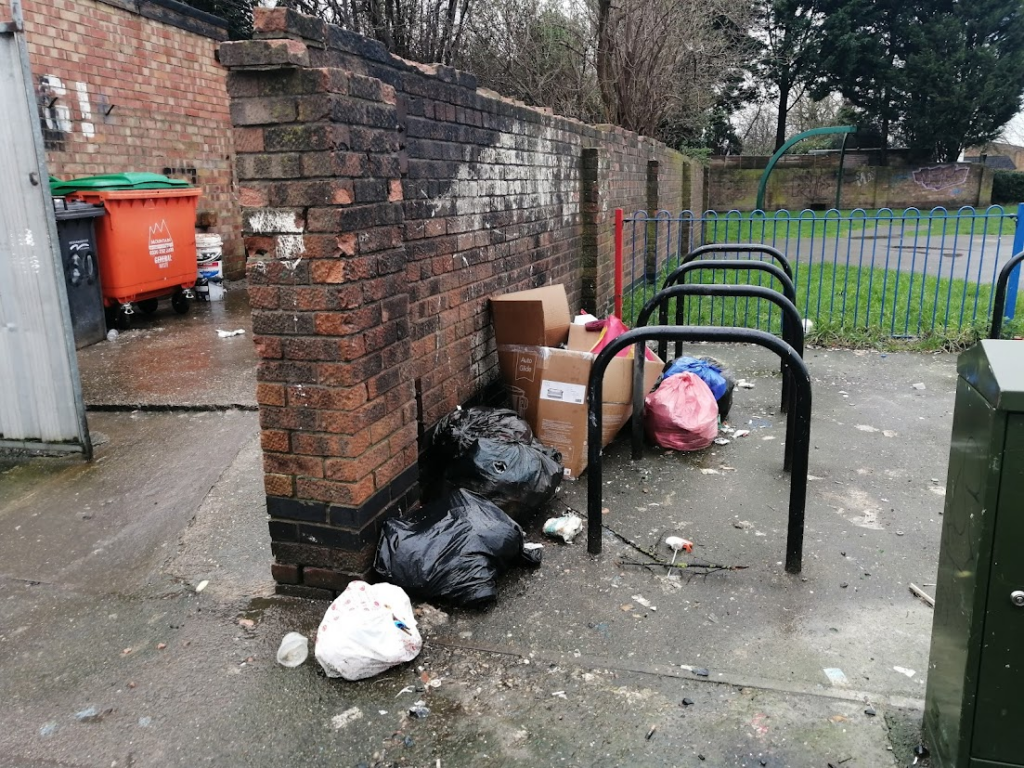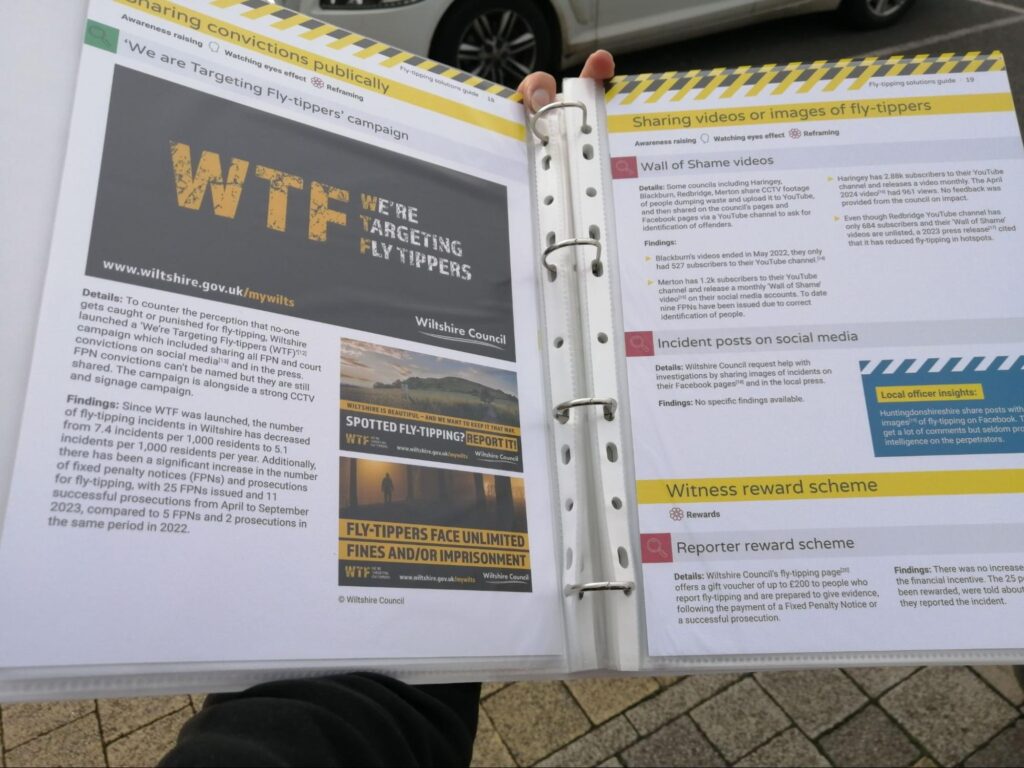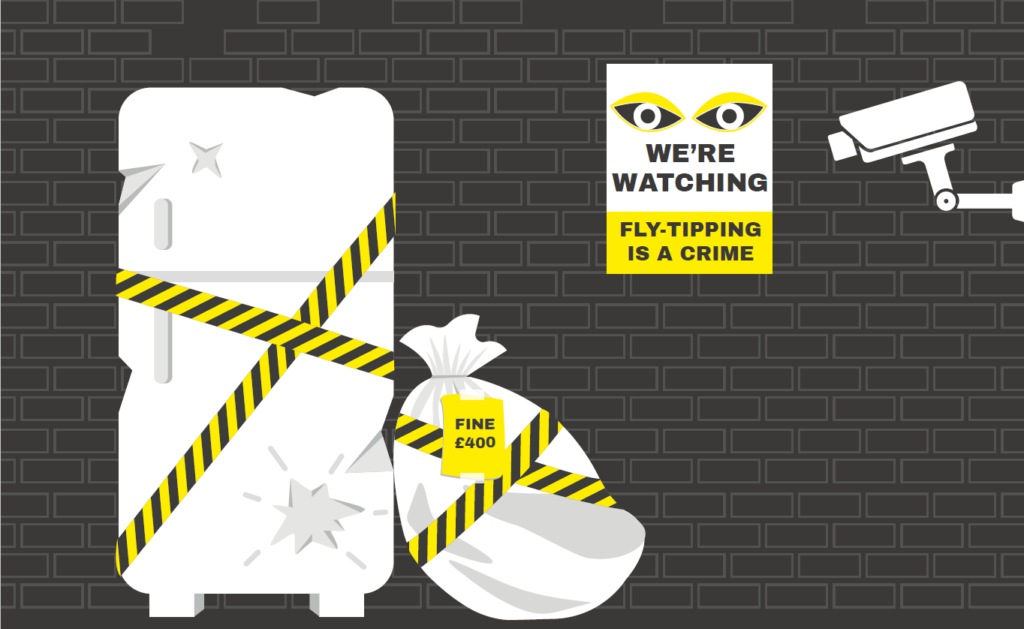
Tackling Household Fly-Tipping with RECAP
The RECAP Waste Partnership S.C.R.A.P fly-tipping subgroup is working to better understand the causes of fly-tipping and find effective ways to prevent it. With funding secured for research, they planned to test different messaging strategies alongside CCTV deployment to discourage fly-tipping.
However, when the Sustainable Sidekicks team met with them, we suggested taking a broader approach—rather than just focusing on signage, there was an opportunity to explore why people fly-tip and identify solutions that address the barriers to responsible waste disposal.
The Brief
Develop new ways for councils to prevent the fly-tipping of black bags and bulky waste, particularly among different resident groups, including lower-income households.
Our Approach
The Sustainable Sidekicks were commissioned to research the drivers behind domestic household fly-tipping (rather than criminal fly-tipping) and provide actionable recommendations. The project outputs included:
- A Literature Review
- A Practical Fly-Tipping Solutions Guide
- A Facilitated Solutions Session
1. Understanding the Problem: The Literature Review
We conducted a problem analysis, reviewing academic research and primary research to understand why fly-tipping occurs, particularly among residents in:
- Social housing & HMOs
- Lower socio-economic areas
- Migrant worker communities
Our findings fell into three key categories:
- Barriers to legitimate disposal – e.g., cost, accessibility, lack of awareness of waste disposal options.
- Reasons people think fly-tipping is acceptable – e.g., misperceptions about responsibility, lack of enforcement.
- Additional challenges for lower-income groups – e.g., affordability of bulky waste disposal, limited transport options.

2. Solutions Through a Behavioural Science Lens
Next, we reviewed effective initiatives tried by other councils and waste organisations, analysing them through a behavioural science framework to understand which behavioural drivers could be activated.
This led to the creation of the Fly-Tipping Solutions Guide—a resource designed for enforcement officers, communications teams, and local councils to quickly reference when dealing with black bag and bulky waste fly-tipping.
The guide categorises solutions by:
- Enforcement strategies
- Street scene infrastructure improvements
- Community engagement and communication
- Waste collection services and events
To make it easy to use, the guide features colour-coding, icons, and a quick-reference section summarising each initiative, along with an explanation of the behavioural science principle it activates.

3. Bringing Solutions to Life: The Solutions Session
To launch the guide, we delivered a Solutions Session for enforcement officers, communications teams, and elected members.
- Introduction & Lunch: The session started with a short presentation on the guide’s key findings, followed by a surplus food lunch, reinforcing the council’s waste reduction commitments.
- Interactive Group Work: Participants worked in small groups, selecting a fly-tipping behaviour and a resident group to focus on.
- Applying Solutions: Using examples from the guide, they explored engagement opportunities and identified initiatives they could apply in their own roles.
- Action Planning: The session concluded with each participant sharing their key takeaway and a commitment to trialing a new approach. The RECAP team committed to following up in a few months to track progress.

“We started the fly-tipping project planning to invest in some signs and cameras and we wanted to know what messages they should carry. Then Livvy and the Sustainable Sidekicks carried out the research and showed us not only all the other ways to tackle fly-tipping but what did, (and didn’t) work so we revised our thinking. As a waste disposal authority, we don’t have direct enforcement responsibilities, but we need to understand what strategies work for our district authority partners”
Phil Tomlin Waste Reduction, Strategy & Policy Manager, Cambridgeshire County Council
Key Outcomes
By shifting the focus from punishment to prevention and engagement, this project provided RECAP councils with a fresh approach to tackling household fly-tipping.
- A research-backed understanding of why fly-tipping occurs and the challenges different resident groups face.
- A practical guide that helps officers quickly identify the best solutions for their communities.
- A collaborative workshop that encouraged immediate action and practical implementation of new approaches.
With the Fly-Tipping Solutions Guide in hand, enforcement officers and councils now have clear, actionable strategies to test and refine—moving beyond signage and CCTV to address the real reasons behind fly-tipping.

Following the success of the Fly-Tipping Solutions Guide, RECAP identified an opportunity to expand its impact by making the guide and workshop available to other local authorities. With the guide available under a free license and the Solutions Workshop offered as part of a paid package, councils across the UK could now benefit from the insights and strategies developed in Cambridgeshire and Peterborough.
Find out how Essex County Council used it to launch their three-month campaign in January.
